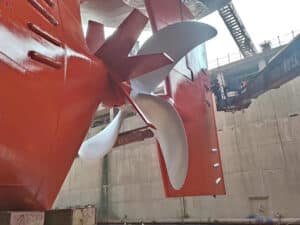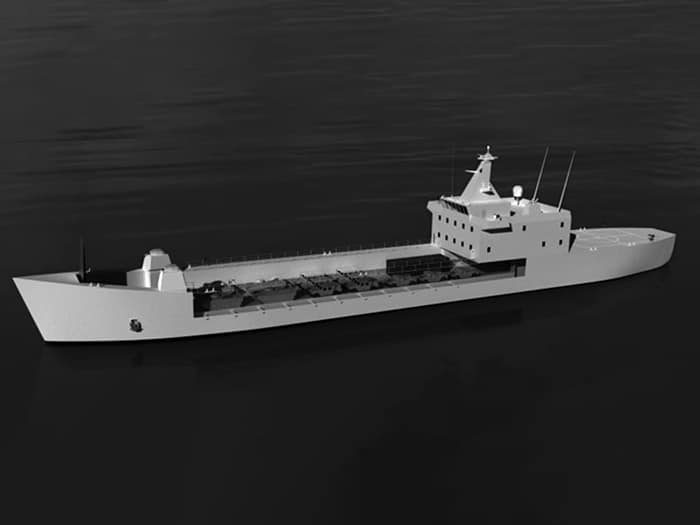
CBO: New LSM medium landing ships would cost two to three times more than Navy estimates
Written by Nick Blenkey
Image: CBO
Back in January, Naval Sea Systems Command issued the Navy’s initial Request For Proposals (RFP) for the detail design and construction (DD&C) of six landing ship medium (LSM) ships. Now it appears those ships could cost way more than the Navy estimates. In response to a request from the Senate Armed Services Committee, the Congressional Budget Office (CBO) has prepared a report on the planned LSM program. Previously called the light amphibious warship (LAW), the new ship is expected to transport and deploy Marine littoral regiments—small Marine Corps units armed with antiship or antiair missiles—in and around a theater of operations, particularly the western Pacific. The Department of the Navy wants to start construction of the vessels in FY 2025
Many facets of the program remain uncertain, such as the number of ships the Navy wants to buy as well as the design and capabilities of the shipthe ship. Senior Navy and Marine Corps leaders have called for between 18 and 35 ships. Equally uncertain, says CBO, is the overall cost of the program, because the Navy’s estimates have varied widely in its last three shipbuilding plans and budget submissions.
By CBO’s estimates, an 18-ship LSM program would cost between $6.2 billion and $7.8 billion in 2024 (inflation-adjusted) dollars, or $340 million to $430 million per ship —from two to roughly three times the Navy’s current estimates.
In 2021, the Navy partnered with five companies to develop concepts for the ship and formulate a preliminary design: Austal USA, Bollinger Shipbuilding, Fincantieri Marinette Marine, VT Halter Marine (now Bollinger Mississippi), and TAI Engineers, a ship design firm that would partner with a shipyard to build its design.
The ranges in CBO’s estimates reflect the range of full-load displacements (4,500 tons to 5,400 tons) in the preliminary designs that shipbuilders submitted to the Navy. (Full-load displacement measures the weight of the water a ship displaces when carrying its crew, stores, cargo, ammunition, fuel, and other liquids.)
CBO’s estimates, which are derived from a CBO model that uses a ship’s weight to calculate its costs, range from two to roughly three times the Navy’s estimates for the 8 ships the service wants to buy between 2025 and 2029. On the basis of the Navy’s estimated cost per ship—roughly $150 million—an 18-ship LSM program would probably cost $2.6 billion in 2024 dollars.
CBO estimates the cost of a 35-ship LSM program at between $11.9 billion and $15.0 billion in 2024 dollars, depending on the final size of the ship. The estimated cost per ship is the same as that for an 18-ship program. In a larger program, the cost-saving effects of learning would be almost equally offset by the real (inflation-adjusted) cost growth in the shipbuilding industry that would occur over the longer period it would take to purchase the additional ships.
CBO says that its estimates are based on a ship designed as a hybrid between an amphibious warfare ship and a ship built to commercial standards. Ships built to military standards have stronger hulls and internal compartments, more shock-hardened systems, and more safety features and equipment, among other things, than commercial ships. If the Navy changed the LSM’s design to make it equivalent to an amphibious warfare ship, then each LSM could cost between $475 million and $600 million, adding between $2 billion and $3 billion to the costs of an 18-ship program and between $5 billion and $6 billion to the costs of a 35-ship program. Conversely, if the LSMs were designed to more commercial standards, then the costs could be much less—from $110 million to $140 million per ship, reducing costs by $4 billion to $8 billion for an 18-ship program and by $5 billion to $10 billion for a 35-ship program.
- Download the CBO report HERE




